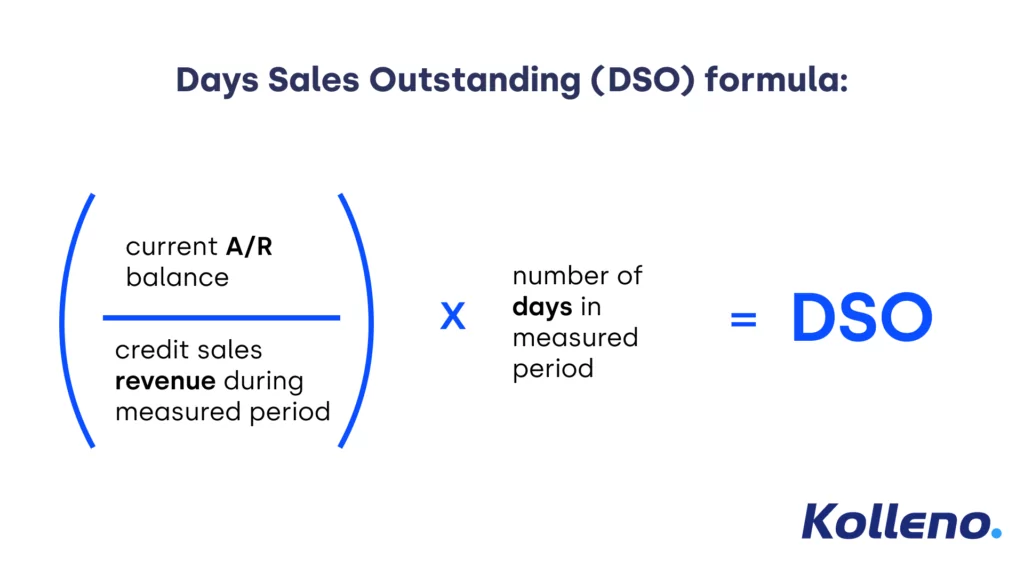Summary:
Accounts Receivable (AR) Key Performance Indicators (KPIs) reveal how effectively a business collects cash owed by its customers.
These KPIs can signal the need for adjustments in collection procedures and highlight cash flow issues resulting from inefficient AR management.
One crucial KPI, Days Sales Outstanding (DSO), measures the average number of days it takes to collect payment after a sale.
DSO is widely regarded as the most important KPI monitored by businesses.
Account Receivable software helps businesses to monitor AR KPIs in real-time, set collection strategies to improve cash flow without cutting expenditure, and successfully chase up outstanding invoices.
Introduction to the AR Metrics
You’ve put in the effort, closed the deal, and secured a new client. The contract is signed, the invoice is sent, and you’re ready to celebrate. However, a successful sale doesn’t automatically translate to cash in your bank account. Until collected, that revenue sits in your balance sheet’s Accounts Receivable field.
This raises several important questions: How long can you afford to wait for payment? What level of Accounts Receivable is acceptable, and at what point does it become problematic? Which Accounts Receivable KPI should you monitor, and what do they reveal about your cash flow health? How can you reduce your accounts receivable turnover ratio?
In this article, we’ll explore the critical AR metrics you need to track to maintain a healthy cash flow and optimize your Accounts Receivable management. By understanding these KPIs, you’ll be better equipped to ensure your business’s financial stability and growth.
How do you Measure AR Performance?
Late payments are a common challenge in B2B transactions, especially if you often send out a number of revised invoices. In the UK, for instance, a quarter of businesses regularly face payment delays, with some sectors like manufacturing experiencing late payments for up to one-third of their invoices. But how can you determine if your Accounts Receivable management is on track or if there are cause for concern?
To effectively measure AR performance, it’s crucial to monitor several Key Performance Indicators (KPIs). These ratios typically consider sales volume, payment timeframes, and the overall accounts receivable figure. Let’s explore five essential AR KPIs that can help your business assess its AR performance:
TOP 5 AR KPIs:
1. Days Sales Outstanding (DSO)
2. Average Days Delinquent (ADD)
3. Accounts Receivable Turnover (ART)
4. Collection Effectiveness Index (CEI)
5. Average Collections Period
What are the Primary Goals of Accounts Receivable Management?
The main objective of Accounts Receivable management is to ensure prompt payment for your business’s sales, effectively reducing your debt-to-sales ratio. Even if your business isn’t facing immediate cash flow issues, a large number of overdue invoices can complicate financial planning for CFOs. Moreover, these overdue invoices essentially provide “free credit” to your customers – a benefit you didn’t intend to offer and one that improves their cash position at your expense.
For businesses with substantial outstanding Accounts Receivable, several challenges arise:
- Difficulty in committing to future investments
- Inability to meet unexpected expenses
- Employee frustration from repeatedly reminding customers to pay
It’s important to note that on-time payment of B2B invoices is relatively rare. Xero Research found that the percentage of overdue invoices for SMEs was 48% in Australia, 45% in New Zealand, and 49% in the United Kingdom. While occasional late payments shouldn’t cause undue alarm, it’s crucial to monitor these AR metrics closely. They can indicate when it’s time to revise your AR management strategy to improve cash flow and overall financial health.
Which AR KPI is the Most Important?
There are 5 accounts receivable performance metrics that businesses should monitor closely.
1. Days Sales Outstanding (DSO)
A survey by SSON found that 56% of companies consider DSO their key AR metric. Its popularity stems from its straightforward calculation and intuitive interpretation. For instance, a DSO of 45 days indicates that, on average, it takes 45 days for cash to reach your bank account after a sale. Generally, a lower DSO is better. Many companies also use this KPI to demonstrate to investors that they’re efficiently generating cash and maintaining a strong liquidity position.
What is considered a healthy DSO?
A DSO of 45 days is generally considered normal, though this can vary significantly by industry. For example:
- Management companies: Average DSO of 127 days
- Car rental businesses: Average DSO of 104 days
- Engineering firms: Average DSO of 74 days
How to calculate DSO?
The formula for DSO is: DSO = (Accounts Receivable / Sales) × 365 days

For example, if annual credit sales were $1,000,000 and Accounts Receivable at year-end were $200,000, the calculation would be:
DSO = (200,000 / 1,000,000) × 365 = 73 days
2. Average Days Delinquent (ADD)
Average Days Delinquent (ADD) is a crucial AR KPI that complements Days Sales Outstanding (DSO). While DSO measures the average time from sale to payment, ADD focuses specifically on overdue invoices, providing insight into the effectiveness of your collection processes.
Key Concepts:
- Overdue invoice: An invoice not paid by the specified deadline.
- Current AR: Unpaid invoices still within the payment deadline.
- Accounts Receivable: Total owed to a company, including both current and overdue invoices.
Calculating ADD:
ADD is calculated using three components:
1. Days Sales Outstanding (DSO)
2. Best Possible DSO (BPDSO)
3. The difference between DSO and BPDSO
The formula is: ADD = DSO – BPDSO
Step-by-step calculation:
1. Calculate DSO using average Accounts Receivable: DSO = (Average Accounts Receivable / Total Credit Sales) × Number of Days
2. Calculate BPDSO using only current (non-overdue) Accounts Receivable: BPDSO = (Current Accounts Receivable / Total Credit Sales) × Number of Days
3. Subtract BPDSO from DSO to get ADD: ADD = DSO – BPDSO
Interpreting ADD:
- A lower ADD indicates more effective collection processes.
- ADD should be analyzed alongside DSO for a comprehensive view of AR health.
- Typically, DSO and ADD should move in the same direction. If they diverge, it may signal changes in payment patterns or collection effectiveness.
By monitoring ADD, businesses can:
- Identify trends in late payments
- Evaluate the effectiveness of collection strategies
- Pinpoint areas for improvement in the AR process
Remember, while a low ADD is generally preferable, it’s important to balance efficient collections with maintaining positive customer relationships.
3. Accounts Receivable Turnover (ART)
Accounts Receivable Turnover is a crucial KPI that indicates how efficiently your business collects its outstanding receivables. It measures how many times, on average, your company collects its accounts receivable during a given period.
How to calculate ART:
The formula for Accounts Receivable Turnover is:
ART = Net Credit Sales / Average Accounts Receivable
Let’s look at an example:
- Annual credit sales: $250,000
- Accounts Receivable at the start of the year: $20,000
- Accounts Receivable at the end of the year: $25,000
ART = $250,000 / (($25,000 + $20,000) / 2) = 11.1 times
Interpretation: In this case, the company collects its average accounts receivable 11.1 times per year.
What does ART tell us?
A higher ART is generally better, as it indicates that the company is collecting payments from customers more frequently. This means less cash is tied up in accounts receivable, improving the company’s liquidity and cash flow.
Accounts Receivable Turnover in Days:
You can also express ART in days, which gives you the average number of days it takes to collect payment after a sale. The formula is:
ART in Days = 365 / ART ratio
Using our example: 365 / 11.1 = 32.9 days
This means that, on average, each customer pays about 33 days after the sale.
Why is ART important?
1. Cash Flow Management: A higher ART indicates faster cash collection, which can improve your company’s ability to meet short-term obligations.
2. Credit Policy Effectiveness: It helps evaluate the effectiveness of your credit and collection policies.
3. Customer Payment Behavior: ART can highlight trends in customer payment patterns, allowing you to adjust strategies as needed.
4. Comparison Tool: You can use ART to benchmark your performance against industry standards or competitors.
By regularly monitoring and analyzing your ART, you can identify areas for improvement in your accounts receivable management and potentially enhance your company’s financial health.
4. Collection Effectiveness Index (CEI)
The Collection Effectiveness Index is one of the key Accounts Receivable metrics that highlight how efficient your collection processes are. The high value of CEI says that the effectiveness is high and vice versa. The CEI is the third most popular Accounts Receivable KPI.
CEI Calculation
[(Beginning Accounts Receivable balance + credit sales) – ending balance of the Accounts Receivable)] / [(Beginning Accounts Receivable balance +credit sales)-ending current Accounts Receivable]*100
Collection Effectiveness Index calculation example:
To understand the CEI and its utility as an Accounts Receivable KPI let’s examine this case:
Beginning Accounts Receivable: $250,000
Ending total Accounts Receivable balance: $90,000
Ending current AR balance: $18,000
Credit sales (monthly): $60,000
If we substitute these numbers, the CEI will be equal to 75%.
CEI= ($250,000+$60,000 – $90,000) / ($250,000+$60,000 – $18,000) * 100 = 75%
The interpretation of CEI is simple, as 100% means that your company collects all of the invoices. The lowest satisfactory CEI ratio is 80%. The one we have seen in the above example means that the collections can be improved and there is a need to examine the inefficiencies.
5. Average Collections Period
One of the most intuitive Accounts Receivable KPIs is the Average collection period. To calculate it, you have to divide the Accounts Receivable balance by yearly sales and then multiply by 365 days.
If sales during a year were $500,000 and the Accounts Receivables balance was $50,000, then the Average Collections Period for the business is calculated as follows:
$50,000/$500,000*365= 36 days, which is probably over the payment deadline if the standard payment terms were 30 days.
The shorter the average collection period the better. However, if the CEI is too low, then it probably indicates that the payment terms are too strict. In the long run, you might lose your customers to your competitors as their collections are more relaxed.
Strategies to Reduce Accounts Receivable Delays
Efficiently managing your accounts receivable is crucial for maintaining healthy cash flow. Here are several strategies to help reduce delays in collecting payments and improve your overall sales ratio:
Offer Early Payment Discounts
Incentivize prompt payments by offering early payment discounts. For example, you could offer a 2% discount if the invoice is paid within 10 days of issuance. This can motivate customers to prioritize your invoices, reducing your average days delinquent.
Implement Clear Payment Terms
Clearly communicate your payment terms to customers from the outset. Include these terms on all invoices and contracts. Consider shortening payment terms where possible to encourage faster payments.
Automate Invoice Processing and Follow-ups
Use accounts receivable software to automate invoice generation and sending. Set up automatic reminders for upcoming and overdue payments. This can significantly reduce the time it takes to collect payments.
Conduct Regular Account Reviews
Regularly review your accounts receivable aging report. Identify patterns in late payments and address issues with specific customers proactively. This can help reduce your average days delinquent over time.
Offer Multiple Payment Options
Make it easy for customers to pay by offering various payment methods, including credit cards, ACH transfers, and online payment portals. The easier it is to pay, the more likely customers are to do so promptly.
Develop a Structured Collections Process
Create a clear, step-by-step collections process for overdue accounts. This might include a series of increasingly urgent communications as the account becomes more delinquent.
Consider Factoring or Invoice Financing
For businesses struggling with cash flow due to slow-paying customers, consider factoring or invoice financing. These options allow you to receive a percentage of your invoices’ value upfront, improving your immediate cash position.
Improve Credit Checking Procedures
Implement thorough credit checks for new customers and regularly review existing customers’ creditworthiness. This can help you avoid extending credit to high-risk clients, potentially reducing future delays in collecting payments.
Train Sales Staff on the Importance of Prompt Payments
Educate your sales team about the impact of delayed payments on the company’s financial health. Encourage them to discuss payment terms with customers during the sales process to set clear expectations from the start.
Monitor and Improve Your Sales Ratio
Keep a close eye on your sales ratio (the ratio of credit sales to total sales) and work on improving it. A higher proportion of cash sales can reduce your reliance on timely customer payments and improve overall cash flow.
By implementing these strategies, you can work towards reducing your accounts receivable delays, lowering your average days delinquent, and improving your overall financial health. Remember, the goal is to maintain a balance between accommodating customers and ensuring timely payments to support your business operations.
Accounts Receivable Automation
Effective accounts receivable management has a direct impact on your business’s cash flow. It’s crucial to monitor AR KPIs in real-time and adjust collection strategies based on customer payment behavior. While this may sound like a time-consuming and complex task, modern technology offers solutions to streamline and automate these processes.
AR automation software, powered by AI algorithms, can handle both routine and complex tasks efficiently. These tools offer several key benefits:
1. Real-time data insights: Through API connections with your accounting software, AR automation provides up-to-the-minute information on your accounts receivable status.
2. Automatic KPI tracking: Keep a constant eye on important metrics without manual calculation or data entry.
3. Adaptive collection strategies: Automatically adjust your approach based on individual customer payment patterns.
4. Automated payment reconciliation: Reduce errors and save time by automating the matching of payments to invoices.
5. Continuous process improvement: The software can identify trends and suggest optimizations to your AR procedures.
By implementing AR automation, businesses can significantly reduce the time and effort spent on managing receivables while improving cash flow and customer relationships. This technology enables your team to focus on strategic decisions rather than getting bogged down in day-to-day AR management tasks.
Find out more about automation of credit control here.










